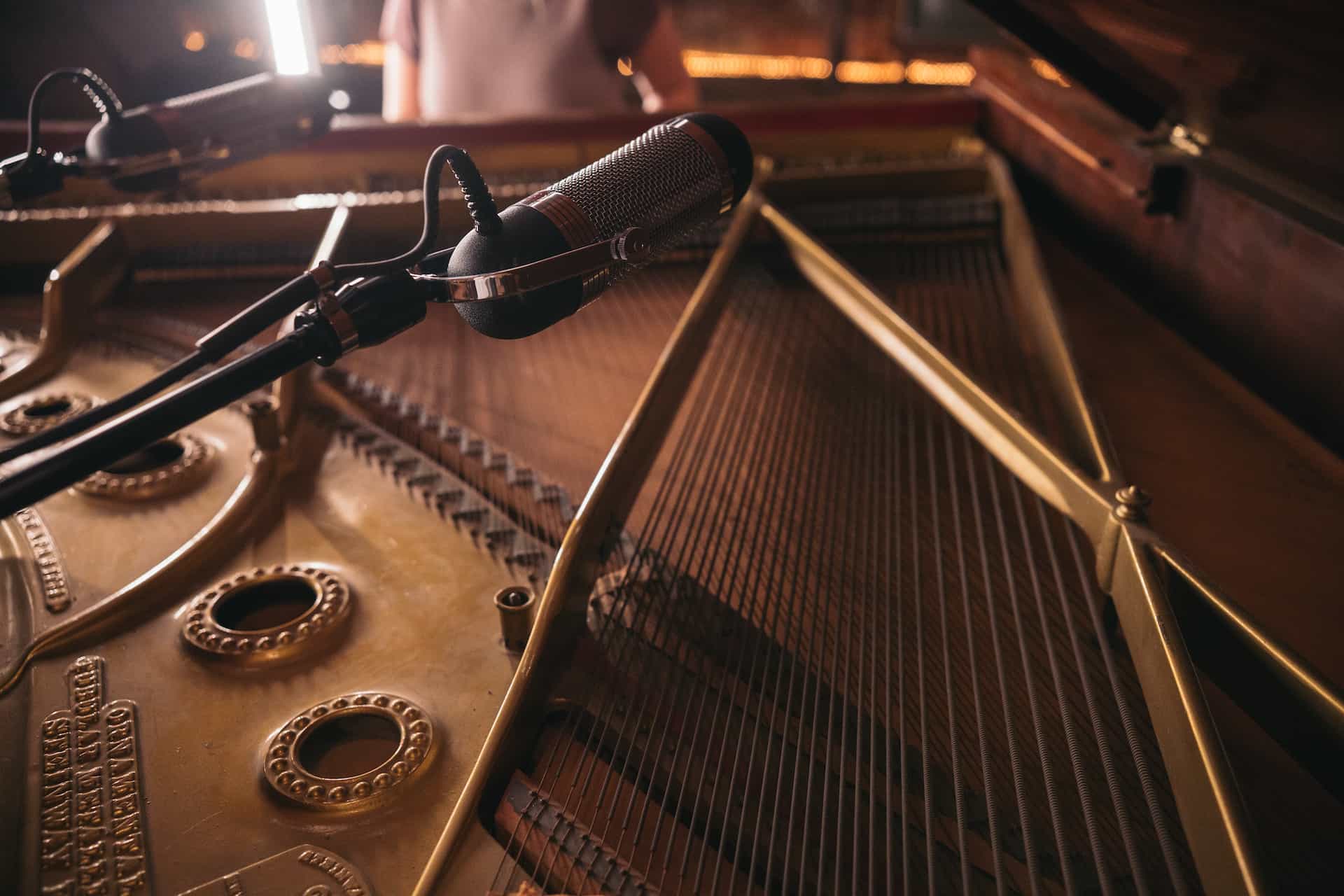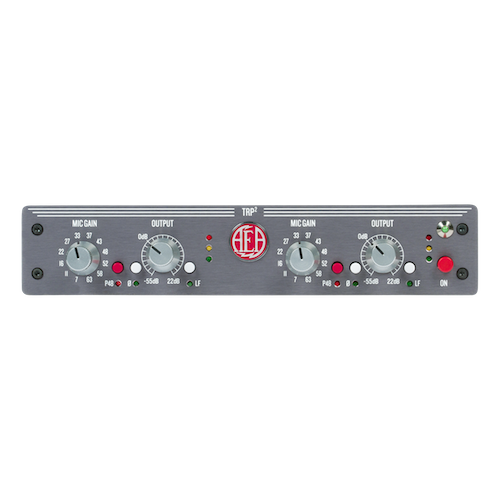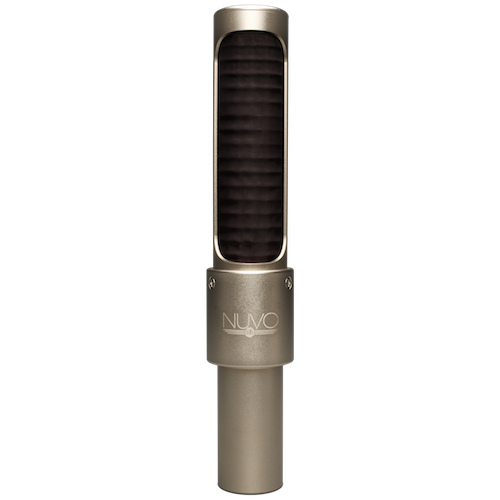Blumlein Technique
Try positioning two R84s in Blumlein configuration roughly 1 to 3 feet from a grand piano’s right side. If recording an upright piano, position it above and behind the player’s head. Point the center of the array towards middle c. This method yields a vast stereo spread with a smart blend of direct sound from the instrument and indirect room tone. The array can be positioned closer to the piano frame to increase low-end response or pulled away to gain more room sound.
Mono Piano
Using a single mic to capture the sound of a piano is a common technique for recording a detailed piano sound that easily fits into a dense mix. A common starting point is to position an R84 towards the center of the piano about 1 – 2 feet away from the hammers. If you find that the middle of the piano is too prominent in the mix, try pulling it back further.
Distant Miking
Pianos, like most acoustic instruments, draw substantial benefit from room tone, so capturing that aspect of a piano’s sound is vital. The versatile R84 excels at recording instruments and ensembles from a distance. From as far as 15 feet away, the R84 captures detailed, balanced sound of an instrument section and supplements it with massive room tone.








